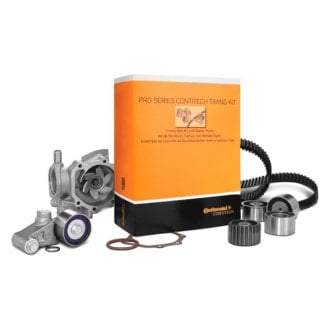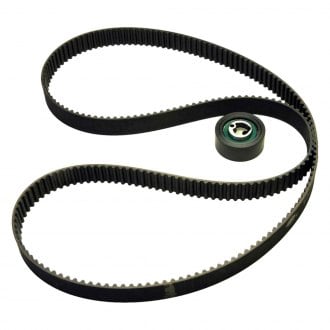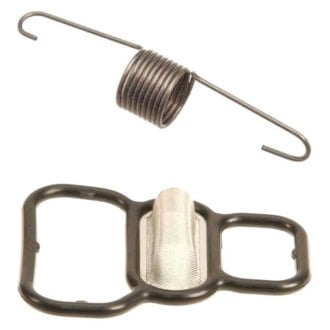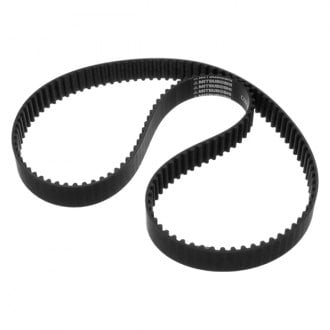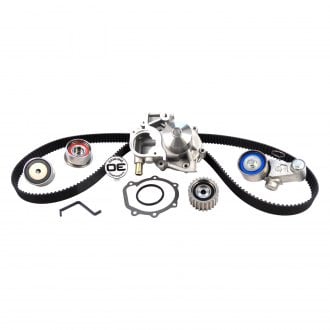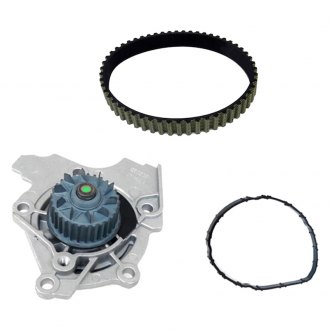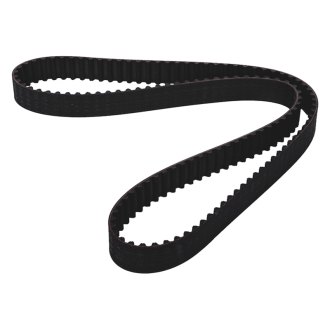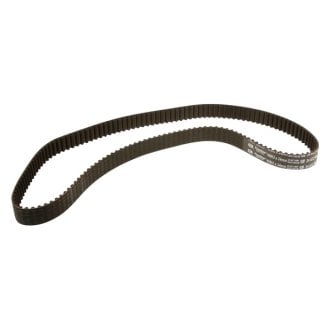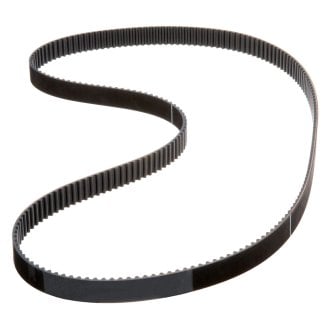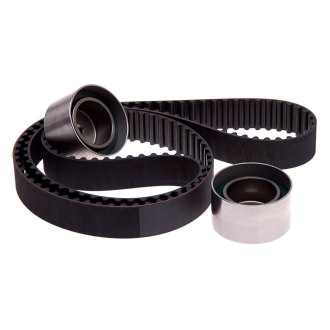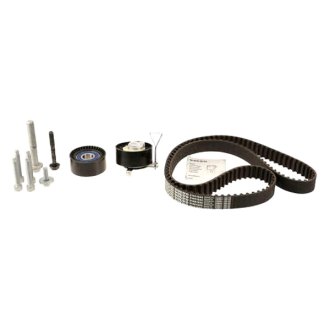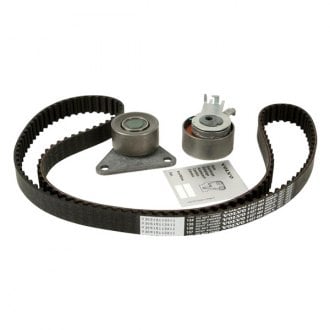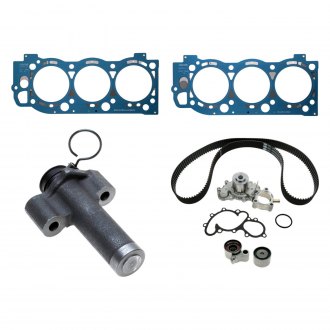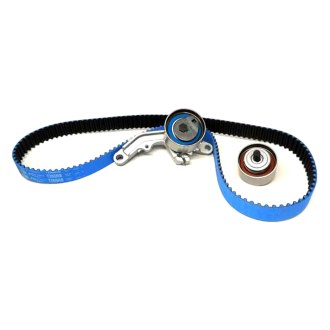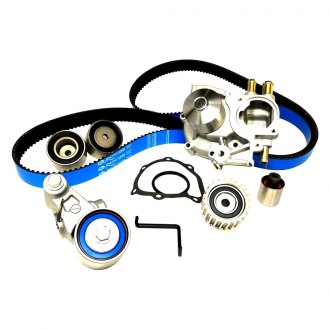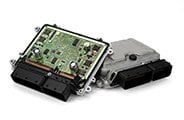Timing Belts & Parts
Select Department
-
 iD FastTrack Extra Save $8.00SKP® - Timing Belt Kit with Water Pump$12.84 - $154.56 + Save up to $8.00 with iD FastTrack
iD FastTrack Extra Save $8.00SKP® - Timing Belt Kit with Water Pump$12.84 - $154.56 + Save up to $8.00 with iD FastTrack -
 AISIN® - Engine Timing Belt Kit with Water Pump$97.85 - $406.98
AISIN® - Engine Timing Belt Kit with Water Pump$97.85 - $406.98 -
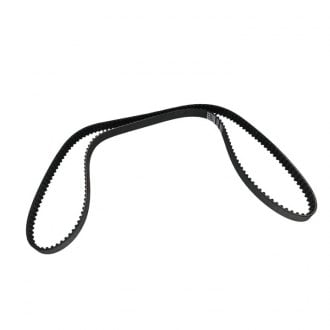 SKP® - Timing Belt$2.62 - $32.43
SKP® - Timing Belt$2.62 - $32.43 -
 Continental® ContiTech™ - Pro Series™ Timing Belt Kit$80.45 - $499.37
Continental® ContiTech™ - Pro Series™ Timing Belt Kit$80.45 - $499.37 -
 Gates® - PowerGrip™ Timing Component Kit$40.88 - $390.90
Gates® - PowerGrip™ Timing Component Kit$40.88 - $390.90 -
 Gates® - RPM™ Timing Belts$51.14 - $259.74
Gates® - RPM™ Timing Belts$51.14 - $259.74 -

-
 Gates® - PowerGrip™ Timing Component Kit with Water Pump$73.38 - $436.82
Gates® - PowerGrip™ Timing Component Kit with Water Pump$73.38 - $436.82 -
 Mitsuboshi® - Timing Belt$10.62 - $97.19
Mitsuboshi® - Timing Belt$10.62 - $97.19 -
 ACDelco® - Professional™ Timing Belt and Water Pump Kit$80.01 - $616.39 + Free Shipping with iD FastTrack
ACDelco® - Professional™ Timing Belt and Water Pump Kit$80.01 - $616.39 + Free Shipping with iD FastTrack -
 GMB® - Timing Belt Kit with Water Pump$85.49 - $394.38
GMB® - Timing Belt Kit with Water Pump$85.49 - $394.38 -
 SKF® - Timing Belt Kit$73.33 - $737.84
SKF® - Timing Belt Kit$73.33 - $737.84 -
 USMW Professional Series® - Timing Belt Kit with Water Pump$66.27 - $394.67
USMW Professional Series® - Timing Belt Kit with Water Pump$66.27 - $394.67 -
 ACDelco® - GM Original Equipment™ Timing Belt$29.58 - $127.48 + Free Shipping with iD FastTrack
ACDelco® - GM Original Equipment™ Timing Belt$29.58 - $127.48 + Free Shipping with iD FastTrack -
 ACDelco® - Genuine GM Parts™ Timing Belt$73.67 + Free Shipping with iD FastTrack
ACDelco® - Genuine GM Parts™ Timing Belt$73.67 + Free Shipping with iD FastTrack -
 iD FastTrack Extra Save $3.40ACDelco® - Professional™ Timing Belt$12.11 - $150.57 + Save up to $3.40 with iD FastTrack
iD FastTrack Extra Save $3.40ACDelco® - Professional™ Timing Belt$12.11 - $150.57 + Save up to $3.40 with iD FastTrack -
 ACDelco® - Professional™ Timing Belt Kit$44.59 - $303.45 + Free Shipping with iD FastTrack
ACDelco® - Professional™ Timing Belt Kit$44.59 - $303.45 + Free Shipping with iD FastTrack -
 Save up to 25%Mopar® - Timing Belt$58.63 - $97.14$104.04 - $129.54Save up to 25%
Save up to 25%Mopar® - Timing Belt$58.63 - $97.14$104.04 - $129.54Save up to 25% -
 iD FastTrack Extra Save $6.40Genuine® - Timing Belt$73.47 - $484.51 + Save up to $6.40 with iD FastTrack
iD FastTrack Extra Save $6.40Genuine® - Timing Belt$73.47 - $484.51 + Save up to $6.40 with iD FastTrack -
 Genuine® - Timing Belt Component Kit$352.14 - $424.53 + Free Shipping with iD FastTrack
Genuine® - Timing Belt Component Kit$352.14 - $424.53 + Free Shipping with iD FastTrack -
 Genuine® - Timing Belt Kit$305.77 - $385.61 + Free Shipping with iD FastTrack
Genuine® - Timing Belt Kit$305.77 - $385.61 + Free Shipping with iD FastTrack -
 Gates® - PowerGrip™ Timing Component Kit with Water Pump Kit$216.93 - $534.35
Gates® - PowerGrip™ Timing Component Kit with Water Pump Kit$216.93 - $534.35 -
 Gates® - RPM™ Timing Component Kit$206.25 - $476.04
Gates® - RPM™ Timing Component Kit$206.25 - $476.04 -
 Gates® - RPM™ Timing Component Kits with Water Pump$270.42 - $541.91
Gates® - RPM™ Timing Component Kits with Water Pump$270.42 - $541.91 -
 Gates® - Timing Belt$8.79 - $159.22
Gates® - Timing Belt$8.79 - $159.22 -
 Continental ContiTech® - Pro™ Timing Belt Kit with Water Pump$269.73 - $440.52
Continental ContiTech® - Pro™ Timing Belt Kit with Water Pump$269.73 - $440.52 -

-
 Continental® ContiTech™ - Conti Synchrobelt™ Timing Belt$10.83 - $390.80
Continental® ContiTech™ - Conti Synchrobelt™ Timing Belt$10.83 - $390.80 -
 Continental® ContiTech™ - Conti-V Multirib™ Timing Belt$22.27 - $34.06
Continental® ContiTech™ - Conti-V Multirib™ Timing Belt$22.27 - $34.06 -
 Continental® ContiTech™ - Elite™ Timing Belt Kit$81.55 - $246.28
Continental® ContiTech™ - Elite™ Timing Belt Kit$81.55 - $246.28
The camshaft(s) on many Single Over Head Cam (SOHC) and Double Over Head Cam (DOHC) engines are driven by the crankshaft via a timing belt. The camshaft operates the valves, and valve opening and closing must be perfectly synchronized with the up and down movement of the pistons for optimal engine performance. The timing belt drives the cam(s) and keeps the engine precisely timed with the aid of a tensioner and idler pulley(s).
At one time, chains and gears were the camshaft drives of choice, but as overhead cam engines became more and more prevalent, engineers found that belts were more easily routed, ran quietly, didn’t require lubrication, were less expensive, and reliable. The last factor has progressed even further, with improved materials stretching belt replacement intervals from about 30,000 miles when they were first used, to 60,000 miles or more today.
But such improvements in reliability shouldn’t inspire complacency. The manufacturer’s replacement interval can be found in your owner’s manual and this maintenance should not be ignored. A timing belt can break without notice and when that happens your engine will stop. Even worse, many engines are “interference” engines, and on these engines the pistons will contact the open valves, causing expensive engine damage. But a belt doesn’t have to fail completely to affect engine performance. Belt damage or a worn tensioner can cause the belt to jump time, resulting in poor performance or an engine that won’t run at all.
If access to the belt is possible, it should be inspected for cracks, missing teeth, frayed or exposed fiber reinforcement, and oil or coolant contamination. Any of these conditions are cause for belt replacement regardless of mileage, but even if the belt looks perfect at the recommended replacement mileage, it should not be reused. Although it is common practice to reuse crankshaft and camshaft pulleys, these components should be inspected for wear and imbedded dirt that could interfere with the new belt.
However, components like automatic tensioners and idler pulleys should always be replaced when a new belt is installed to ensure proper engine performance. On many engines the timing belt also drives the water pump. Although it may appear OK when the belt is serviced, its negligible cost compared to the cost of the labor to access it makes pump replacement with the belt the smart move. And it would be a shame to have to do the job all over again if the old pump were to fail shortly afterward. Our kits provide everything needed with one part number: belt, tensioners, idler pulley(s), water pump, and seals and gaskets.
Browse by Part Name
Featured Brands
Related Categories
 Engine Assemblies
Engine Assemblies Motor Mounts
Motor Mounts Engine Blocks
Engine Blocks Valves & Valvetrain Parts
Valves & Valvetrain Parts Pistons, Rings & Connecting Rods
Pistons, Rings & Connecting Rods Oil Filters
Oil Filters Serpentine Belts & Auxiliary Drive Belts
Serpentine Belts & Auxiliary Drive Belts Valve Covers
Valve Covers Timing Gears, Chains & Covers
Timing Gears, Chains & Covers Engine Oil Pans, Drain Plugs & Dipsticks
Engine Oil Pans, Drain Plugs & Dipsticks Cylinder Heads
Cylinder Heads Engine Pulleys
Engine Pulleys Engine Sensors, Relays, Switches & Connectors
Engine Sensors, Relays, Switches & Connectors Oil Pumps
Oil Pumps Drive Belt Tensioners
Drive Belt Tensioners Oil Coolers
Oil Coolers Camshafts
Camshafts Crankshafts
Crankshafts Engine Management Systems
Engine Management Systems Engine Bearings
Engine Bearings Harmonic Balancers
Harmonic Balancers Engine Rebuild Kits
Engine Rebuild Kits Oil Catch Cans
Oil Catch Cans Balance Shafts
Balance Shafts Engine Swap Kits
Engine Swap Kits Engine Wiring Harnesses
Engine Wiring Harnesses Intercoolers
Intercoolers Throttle Bodies
Throttle Bodies Carburetors
Carburetors Motor Oils
Motor Oils
Browse by Vehicle
Timing Belts Reviews

